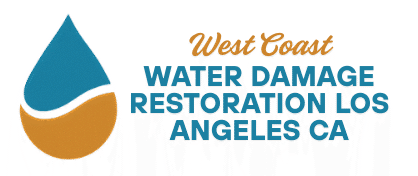Water damage can happen in many ways, from a small leak to a major flood. When water enters a home or business unexpectedly, it can cause serious problems if not handled quickly. Dealing with water damage means more than just drying up puddles. It involves a full process to make sure the affected area is safe and clean again.
What is Water Damage?
Water damage occurs when unwanted water comes into contact with materials and structures, causing them to degrade. This can be due to various reasons:
- Leaking Pipes: Small drips can lead to big problems over time.
- Burst Pipes: A sudden rush of water from a broken pipe.
- Appliance Malfunctions: Dishwashers, washing machines, or water heaters can fail.
- Natural Disasters: Heavy rains or floods can bring water into buildings.
- Roof Leaks: Damaged roofs allow rain to seep inside.
The type of water involved also matters. Clean water from a broken pipe is different from dirty water from a sewage backup, which carries more risks.
Why Quick Action Matters
When water damage strikes, time is very important. The longer water sits, the more harm it can do.
- Mold Growth: Mold can start to grow within 24 to 48 hours in damp conditions. This can cause health issues and further damage to property.
- Structural Damage: Water can weaken wood, drywall, and other building materials. Floors might warp, and walls could become unstable.
- Property Loss: Furniture, carpets, and personal items can be ruined if not dried and treated quickly.
- Increased Costs: Waiting to address water damage often leads to more extensive repairs and higher costs in the long run.
The Water Damage Restoration Process
A complete water damage restoration process involves several steps to ensure the area is fully recovered. When seeking Water Damage Restoration in Calabasas CA, these are the general stages that are followed:
Initial Assessment and Inspection
The first step is to find where the water came from and how far it has spread. Special tools are used to check moisture levels in walls, floors, and ceilings. This helps create a clear plan for restoration.
Water Extraction
Large amounts of standing water are removed using powerful pumps and vacuums. This step is critical to prevent water from soaking deeper into materials.
Drying and Dehumidification
After extraction, the area is thoroughly dried using industrial-strength air movers and dehumidifiers. This removes moisture from the air and from building materials, which helps prevent mold and further damage.
Cleaning and Sanitizing
All affected surfaces are cleaned and sanitized to remove dirt, contaminants, and prevent the growth of mold, bacteria, and other harmful microbes. Deodorizers may also be used to remove any unpleasant odors.
Repairs and Reconstruction
Once the area is dry and clean, any damaged materials are repaired or replaced. This can include replacing drywall, flooring, or rebuilding parts of the structure that were too damaged to save. The goal is to return the property to its original condition or even better.
Choosing a Restoration Service
When facing water damage, especially in an area like Calabasas, it is important to choose a reliable service. Look for companies that offer:
- Fast Response: Speed is key in preventing more damage.
- Experienced Technicians: Professionals know how to handle different types of water damage safely and effectively.
- Proper Equipment: Advanced tools are needed for thorough drying and cleaning.
- Clear Communication: A good service will keep you informed about the process and expected outcomes.
Understanding these steps can help property owners in Calabasas make informed decisions when water damage occurs.





